A Concert of Parlor Songs at Virginia
Wesleyan College
Hofheimer Theater, November 26, 2007 It was a sweet
evening. How could it not be when the recital was titled Home Sweet Home
and had five of Hampton Roads' finest performers and was hosted by Dwight Davis
whose "From the Parlor" radio program is a long-time, popular Sunday afternoon
feature on WHRO-FM. 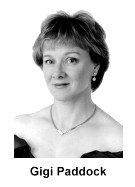 The
quartet of singers opened with Home Sweet Home, written in 1829 by Henry
Bishop (1786-1855). With Charles Woodward at the piano, soprano Georgeanne Paddock,
mezzo-soprano Lisa Relaford Coston, tenor Kerry Jennings and baritone Christopher
Mooney regaled the audience with some mighty four-part harmony. The music carried
us back to a time when there was a piano in the parlor and people gathered to
share music. A daughter was given piano lessons and if you were fortunate she
had a good voice. Musical intensity built as Mr. Jennings sang Franz Schubert's
(1797-1828) Serenade. Translated into English, this German art song had
become widely popular in America. The
quartet of singers opened with Home Sweet Home, written in 1829 by Henry
Bishop (1786-1855). With Charles Woodward at the piano, soprano Georgeanne Paddock,
mezzo-soprano Lisa Relaford Coston, tenor Kerry Jennings and baritone Christopher
Mooney regaled the audience with some mighty four-part harmony. The music carried
us back to a time when there was a piano in the parlor and people gathered to
share music. A daughter was given piano lessons and if you were fortunate she
had a good voice. Musical intensity built as Mr. Jennings sang Franz Schubert's
(1797-1828) Serenade. Translated into English, this German art song had
become widely popular in America. 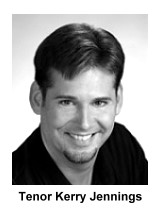 A
moment of nostalgia for me was a duet by Gigi Paddock and Lisa Relaford Coston
singing Whispering Hope (Alice Hawthorne, 1827-1902) my favorite church
song when I was ten. It was just so powerfully exciting when the voices blended
on the chorus. There were solos, duets and quartets, all done with a decorous
restraint in songs that, at least with some, could easily slide into parody and
overstatement. The emotionally valid interpretation and the camaraderie of the
performers gave the evening a warm glow. A
moment of nostalgia for me was a duet by Gigi Paddock and Lisa Relaford Coston
singing Whispering Hope (Alice Hawthorne, 1827-1902) my favorite church
song when I was ten. It was just so powerfully exciting when the voices blended
on the chorus. There were solos, duets and quartets, all done with a decorous
restraint in songs that, at least with some, could easily slide into parody and
overstatement. The emotionally valid interpretation and the camaraderie of the
performers gave the evening a warm glow. 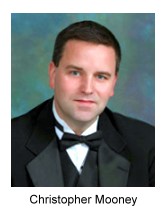 "I
thought I saw Susanna dear, a-coming down the hill, the buckwheat cake was in
her mouf, de tear was in her eye," and so goes Oh! Susanna from 1848 by
Stephen Foster (1826-1864), the poster-boy for American popular song. Oh! Susanna
was written for a minstrel show, only to become the marching song of the "forty-niners"
on their way to search for gold in California. In the second part of the program
this song ended a medley of Foster selections: Jeannie with the Light Brown
Hair followed by Chuck Woodward rocking out on Camptown Races, My
Old Kentucky Home and Beautiful Dreamer, presented in all their glory
by the quartet. They were followed by an audience singalong that included several
songs that were taught to me by my grandfather: In the Good Old Summer Time
(1902, George Evans) Daisy Bell, better known as Bicycle Built for Two
(1892, Harry Dacre), Grandfather's Clock (1876, Henry C. Work), Carolina
in the Morning (1922, Walter Donaldson) and a dozen others. "I
thought I saw Susanna dear, a-coming down the hill, the buckwheat cake was in
her mouf, de tear was in her eye," and so goes Oh! Susanna from 1848 by
Stephen Foster (1826-1864), the poster-boy for American popular song. Oh! Susanna
was written for a minstrel show, only to become the marching song of the "forty-niners"
on their way to search for gold in California. In the second part of the program
this song ended a medley of Foster selections: Jeannie with the Light Brown
Hair followed by Chuck Woodward rocking out on Camptown Races, My
Old Kentucky Home and Beautiful Dreamer, presented in all their glory
by the quartet. They were followed by an audience singalong that included several
songs that were taught to me by my grandfather: In the Good Old Summer Time
(1902, George Evans) Daisy Bell, better known as Bicycle Built for Two
(1892, Harry Dacre), Grandfather's Clock (1876, Henry C. Work), Carolina
in the Morning (1922, Walter Donaldson) and a dozen others. 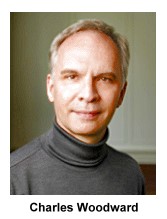 There
are many CD's of this repertory. An excellent introduction with tenor John Aler
and pianist Grant Gershon on Delos DE 3181 called Songs We Forgot to Remember
includes several selections we heard: A Perfect Day by Carrie Jacobs-Bond
(1962-1946), Kashmiri Song with poetry by Lawrence Hope set by Amy Woodforde-Finden
(1860-1919) and The Lost Chord by Sir Arthur Sullivan (1842-1900), a total
of twenty-five selections in all. There
are many CD's of this repertory. An excellent introduction with tenor John Aler
and pianist Grant Gershon on Delos DE 3181 called Songs We Forgot to Remember
includes several selections we heard: A Perfect Day by Carrie Jacobs-Bond
(1962-1946), Kashmiri Song with poetry by Lawrence Hope set by Amy Woodforde-Finden
(1860-1919) and The Lost Chord by Sir Arthur Sullivan (1842-1900), a total
of twenty-five selections in all.
James Piano
Quartet
at Virginia Wesleyan College
On Friday evening, April 17,
2009 the James Piano Quartet, founded by violist Joseph J. Nigro came to Hofheimer
Theater to give a recital of music by Mozart, Honegger and Taneyev. Currently
in residence at Sweetbriar College, the group has a repertory of popular chamber
works, lesser known works and new works they commission. The group will collaborate
with New York composer Noelle Wallach in 2009-2010 performing music written for
them. 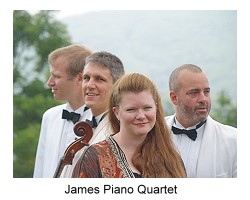 Violinist
Jana Ross joined Mr. Nigro in the first selection Duo in G K. 423, mostly
written in Salzburg in the summer of 1783 by W.A. Mozart (1756-1791). The two
independent musical lines meld playfully. The instrumental tones are sweet and
the communication between the players was excellent. The beautifully open sound
of the violin went on its way, though a dissonance is sometimes created by the
viola in the allegro first movement of this sunny, elegant music. The adagio that
follows begins with a somber mood but soon, as if the sun came out, the joy comes
flooding into this short movement. The rondo, circle of recurrence, movement is
of brilliant instrumental sound that remains as the tempo accelerates. There is
a momentary pause and the theme recurs with a sweet embrace of lines and eye-to-eye
communication from our happy, committed performers. Violinist
Jana Ross joined Mr. Nigro in the first selection Duo in G K. 423, mostly
written in Salzburg in the summer of 1783 by W.A. Mozart (1756-1791). The two
independent musical lines meld playfully. The instrumental tones are sweet and
the communication between the players was excellent. The beautifully open sound
of the violin went on its way, though a dissonance is sometimes created by the
viola in the allegro first movement of this sunny, elegant music. The adagio that
follows begins with a somber mood but soon, as if the sun came out, the joy comes
flooding into this short movement. The rondo, circle of recurrence, movement is
of brilliant instrumental sound that remains as the tempo accelerates. There is
a momentary pause and the theme recurs with a sweet embrace of lines and eye-to-eye
communication from our happy, committed performers. After the applause
died down, Mr. Nigro waved the pianist Nicholas Ross onto the floor, while Mrs.
Ross took a seat with the audience. Sonata for Violin and Piano #28 by Arthur
Honegger (1892-1955), a Swiss born French composer and a member of Les Six, was
written in 1920. By way of introduction, Mr. Nigro told us that the quartet is
working on a recording of Honegger's complete chamber music. Though challenging
for the players, the audience will hear only pleasant melodies. If you take piano
music by Satie, slow it down, add a large measure of sadness in an angular solo
line interspersed with phrases on the viola, you will have an idea of how Honegger
sounds. In the andante vivace movement a fractured duet follows. His musical language
is very French but Impressionism has given way to the pain of life post World
War I. The allegro moderato section has a somber piano solo that gives way to
joy. The viola calls us back into gloom. The ending just dies away. The allegro
non troppo is a duet tune that marches along. Dynamic viola phrases blend with
continuing piano - a dance of sorts but the heaviness never completely goes away.
Sergei Taneyev (1856-1915) was Tchaikovsky's favorite composition student at the
Moscow Conservatory (1866-1875) and a noteworthy pianist who gave the first performance
of all of Tchaikovsky's works for piano and orchestra. Taneyev is best remembered
for his monumental book on counterpoint. Invertible Counterpoint in the Strict
Style was published in English in 1962. At age 29 he reluctantly accepted
the post of director of the Moscow Conservatory. Four years later he resigned.
It distracted him from composing, though he did continue teaching his counterpoint
classes. We heard Piano Quartet in E, Op. 20 composed in 1908 with
cellist Andrew Gabbert joining in to complete the quartet. Nick Ross, who is originally
from England, found what is perhaps the last copy of the Taneyev quartet in a
London shop. From the brilliant Romantic opening, the sound is rich and full.
As the instrumentalists broke into individual lines they created a display of
colors, a kaleidoscope of shifting moods ranging from somber to playful. Think
of a bee flying quickly form one flower to another in a garden of hot reds, sunny
yellows, chaste white, cool blues and even deep purples, all with a mid day clarity
and you will get the feeling of the Allegro brilliante movement. Adagio
piu tosto largo is reflective in mood and meltingly beautiful. Passionate piano
playing leads us into an intense, driven main theme that may have been the inspiration
for any number of popular love songs from the 1940s and 50s - think Vaughan Monroe
or your favorite crooner. The theme appears in many variations, all interesting
and all beautiful. After all, Taneyev wrote the book on counterpoint.
The
allegro molto finale is a fury demanding virtuoso playing and receiving it from
each player. There is a brief, solo piano passage that briefly shifts the mood
to calm, only to plunge once again into an inferno of intensity. Only occasionally
did I find it emotionally overwhelming. In such a short time we are tumbled head-over-heals
into a maelstrom of musical ideas. As this subsides like a carousel winding down,
he returns to the love song from the second movement but again the intensity builds
as if he must squeeze in one more variation before he releases us from ecstatic
surrender. The quartet is outstanding. The communication among them as
they create the music is superior and the relaxed, open, communication in word
and playing effectively draws the listener into the experience. My only regret
is that they are not local! They will be performing at the 2009 Wintergreen Summer
Music Festival and Academy in Wintergreen, Virginia, which runs from July 6 to
August 2. Visit www.wintergreenperformingarts.org
Having the program projected on a screen above the players rather than on a printed
handout made extra work for this writer but otherwise worked well. I could get
used to this way of saving paper and ink. Engaging the audience visually in this
way heightened my focus and I heard no complaints from friends in the audience.
Printer-friendly format
More Virginia Wesleyan
Back to Review Index
Back
to Top
Home
Calendar
Announcements
Issues
Reviews
Articles
Contact
Us |

